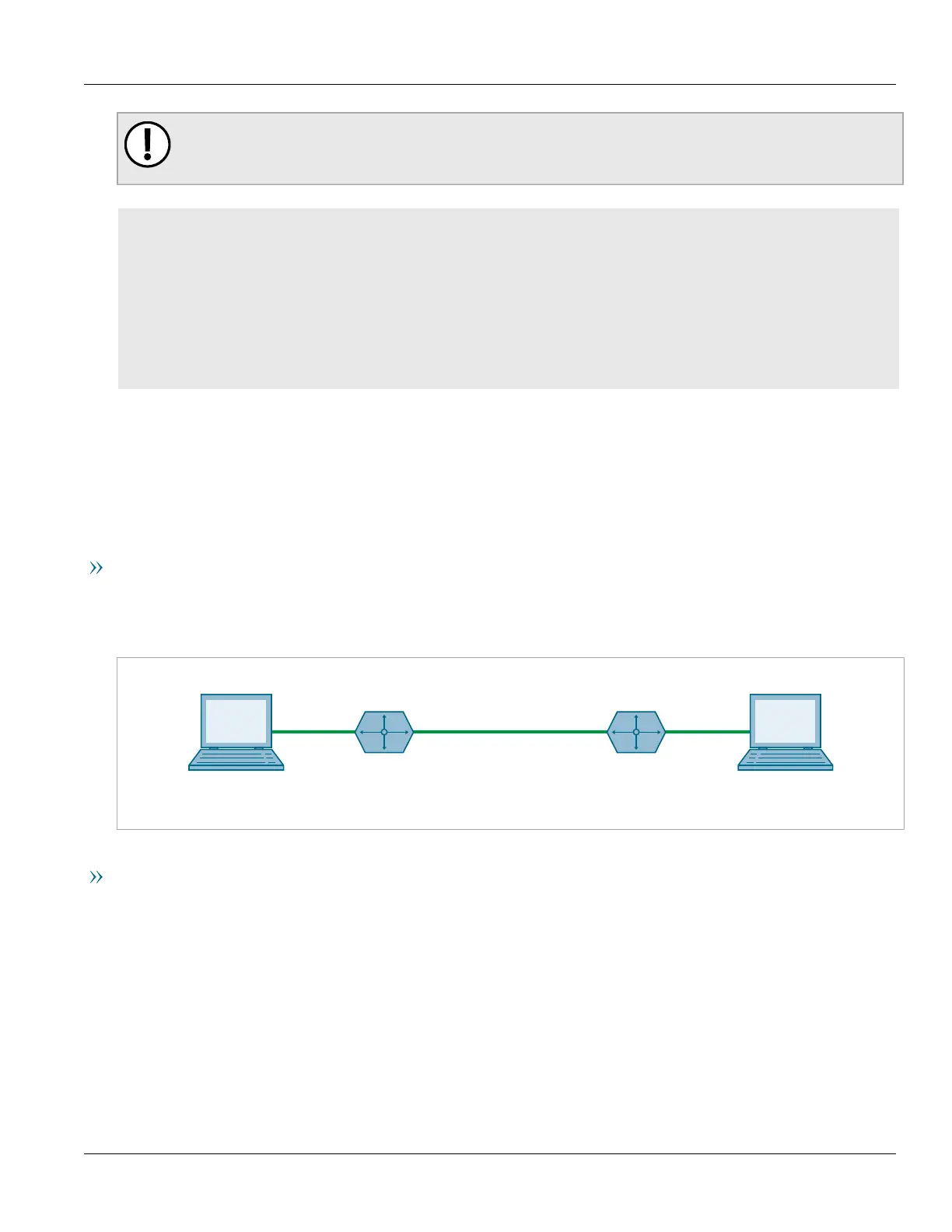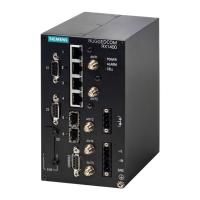RUGGEDCOM ROX II
CLI User Guide
Chapter 12
Tunneling and VPNs
L2TPv3 Tunnel Scenarios 375
IMPORTANT!
RUGGEDCOM ROX II supports a maximum of 128 tunnel sessions, which in turn support a maximum of
128 VLANs each.
CONTENTS
• Section12.4.1, “L2TPv3 Tunnel Scenarios”
• Section12.4.2, “Creating an L2TPv3 Tunnel”
• Section12.4.3, “Managing Static L2TPv3 Tunnels”
• Section12.4.4, “Managing Dynamic L2TPv3 Tunnels”
• Section12.4.5, “Managing Sessions for L2TPv3 Tunnels”
• Section12.4.6, “Managing VLANs for L2TPv3 Tunnels”
Section12.4.1
L2TPv3 Tunnel Scenarios
The following illustrates some of the ways in which L2TPv3 tunnels can be implemented.
Basic L2TPv3 Tunnel
In the following topology, an L2TPv3 tunnel is established between routers R1 and R2 over a WAN interface. The
tunnel interface is assigned an IPv4 address on both devices. Traffic routed from R1 is encapsulated in an L2TPv3
header and decapsulated by R2. The reverse is true when traffic is routed from R2.
Figure15:Basic L2TPv3 Tunnel
Multiple Sessions
In the following topology, separate bridges have been created between routers R1 and R2 using sessions. Traffic
sent via virtual switch switch.0002 traverses the l2t-1-1 tunnel. Traffic sent via virtual switch switch.0003
traverses the l2t-1-2 tunnel.

